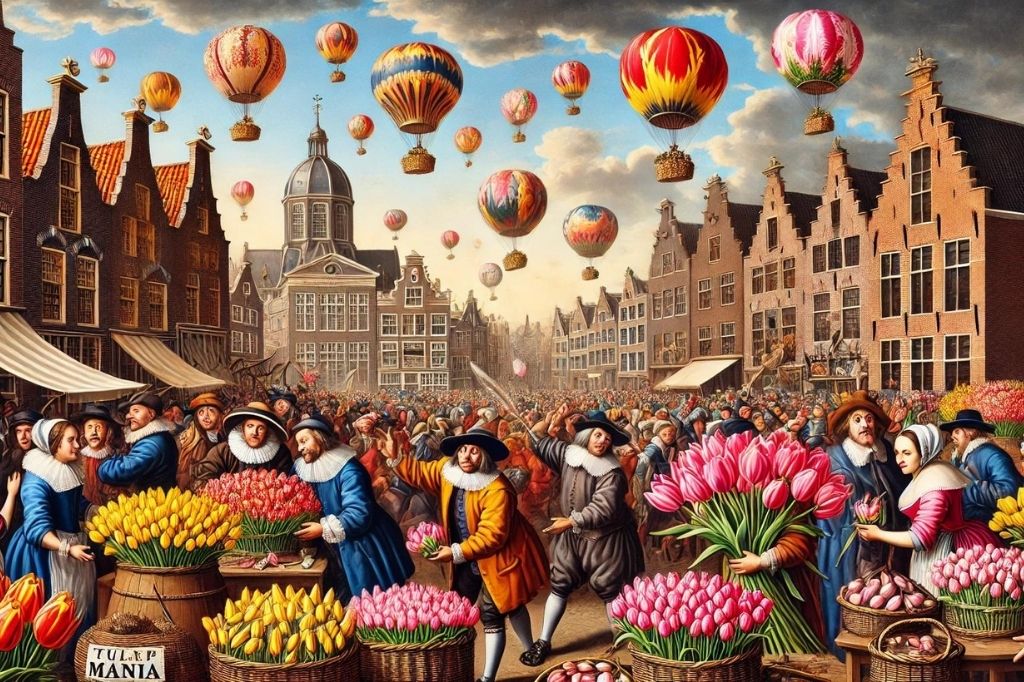In the seventeenth hundred years, the Netherlands experienced perhaps of the most popular speculative air pocket ever, known as The Historical Significance of the Dutch Tulip Mania. This peculiarity, which happened during the Dutch Brilliant Age, saw costs for tulip bulbs arrive at uncommonly significant levels before emphatically falling. The occasion has since turned into an exemplary model in monetary investigations of organic market, market hypothesis, and cost bubbles.
Origins of Tulip Mania
Tulip Mania started in the mid 1600s when tulips were acquainted with the Dutch from the Ottoman Realm. Rapidly turning into a sought after extravagance thing among the well off, tulips represented status and refinement. The interest with tulips prompted the advancement of new and intriguing assortments, further driving their allure and saw esteem. As request expanded, examiners entered the market, purchasing bulbs at exorbitant costs with the expectation of selling them for much more.
This speculative market was driven by the tulips’ exceptional attributes and the predetermined number of bulbs accessible. The extraordinary interest and the speculative idea of ventures prompted soaring costs, making way for perhaps the earliest recorded speculative air pocket.
The Pinnacle of Tulip Mania
By 1636, the cost of some tulip bulbs had ascended to multiple times the yearly pay of a talented specialist, making them worth more than certain houses at that point. This time of outrageous market hypothesis arrived at its top in the colder time of year of 1636-37. Tulips were exchanged on stock trades various Dutch towns and urban communities, representing the far reaching craze over these blossoms.
The mania wasn’t simply bound to proficient merchants; people from all classes, including craftsmans, ranchers, and retailers, were brought into the market, exchanging or offering assets to take part in tulip exchanging. The speculative air pocket had completely saturated Dutch society.
The Burst and Its Aftermath
The defining moment for Tulip Mania came in February 1637 when costs unexpectedly dropped and alarm selling started. This prompted a sharp decrease in costs, leaving many holding bulbs that merited a small part of what they had paid. The breakdown devastatingly affected the Dutch economy, with numerous examiners confronting monetary ruin.
This occasion filled in as an early advance notice of the perils intrinsic in resource bubbles and speculative exchanging. The outcome prompted changes in financial strategies and soberingly affected speculative business sectors in the Netherlands and all through Europe.
Economic Examples and Present day Parallels
The Tulip Mania offers critical examples on the mental and monetary elements of speculative air pockets. It shows how even apparently reasonable business sectors are helpless against aggregate panic and how such mania can prompt unreasonable market conduct. Business analysts and history specialists concentrate on this occasion to see better the elements that lead to such air pockets and how to moderate comparable events in the future possibly.
Present day equals can be drawn with different monetary emergencies and air pockets, for example, the website bubble and the real estate market slump of 2008, where comparable examples of speculative way of behaving were noticed.
The Historical Significance of the Dutch Tulip Mania stretches out past a simple monetary peculiarity; it is a convincing story about human way of behaving, financial hypothesis, and the effect of cultural patterns on market elements. Its review offers significant experiences into the intricacies of monetary business sectors and keeps on filling in as a kind of perspective point for figuring out speculative air pockets in the economy today.


